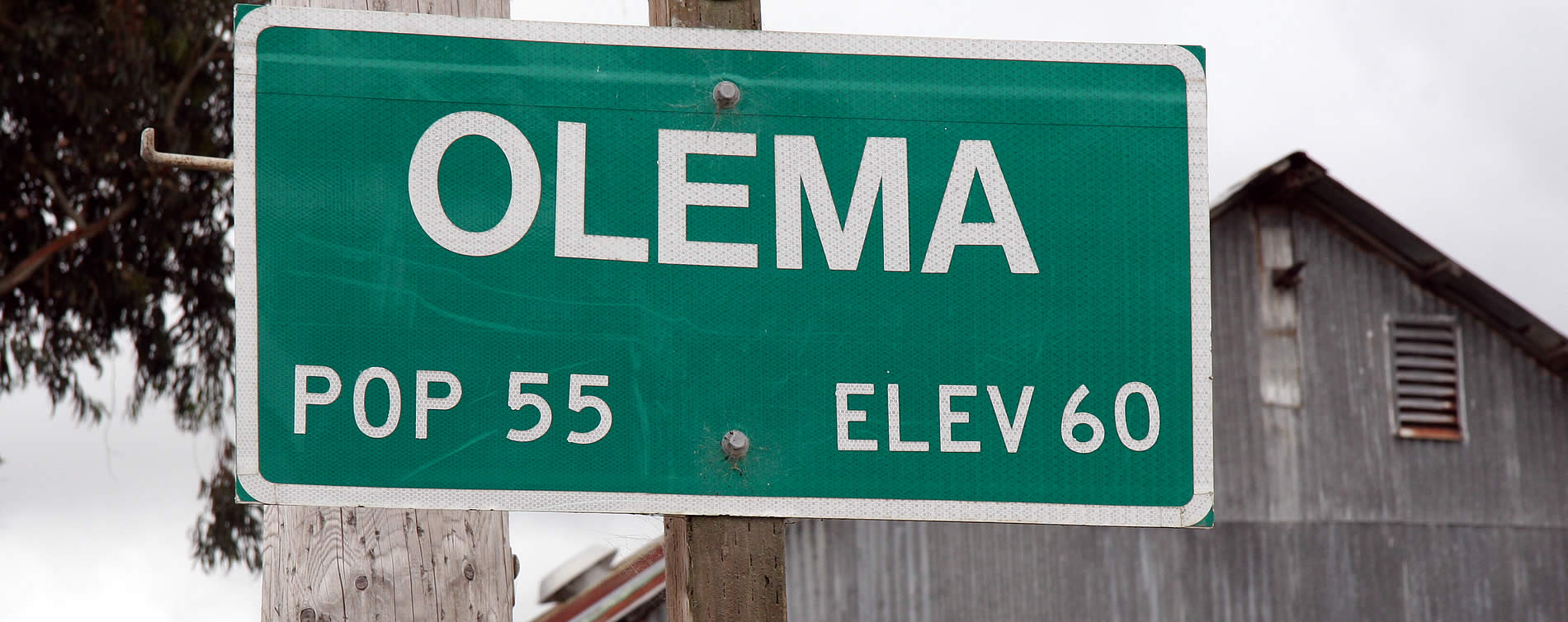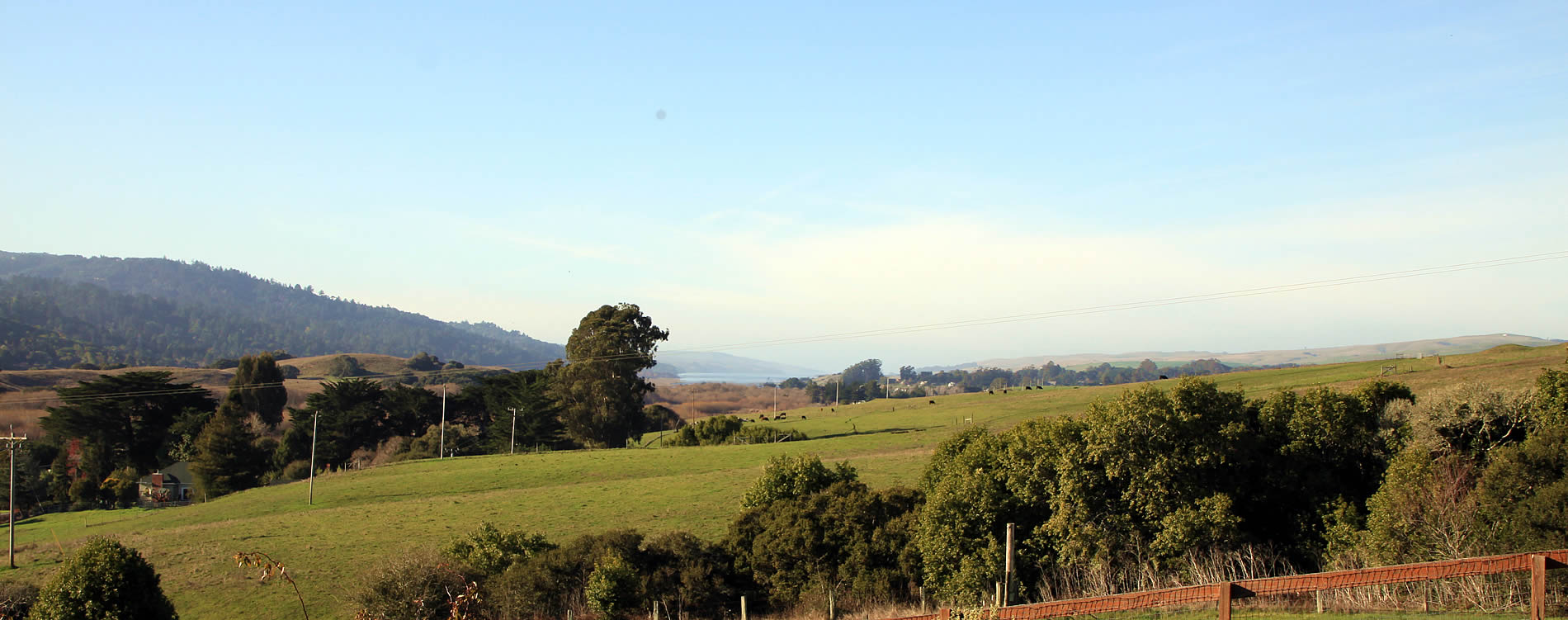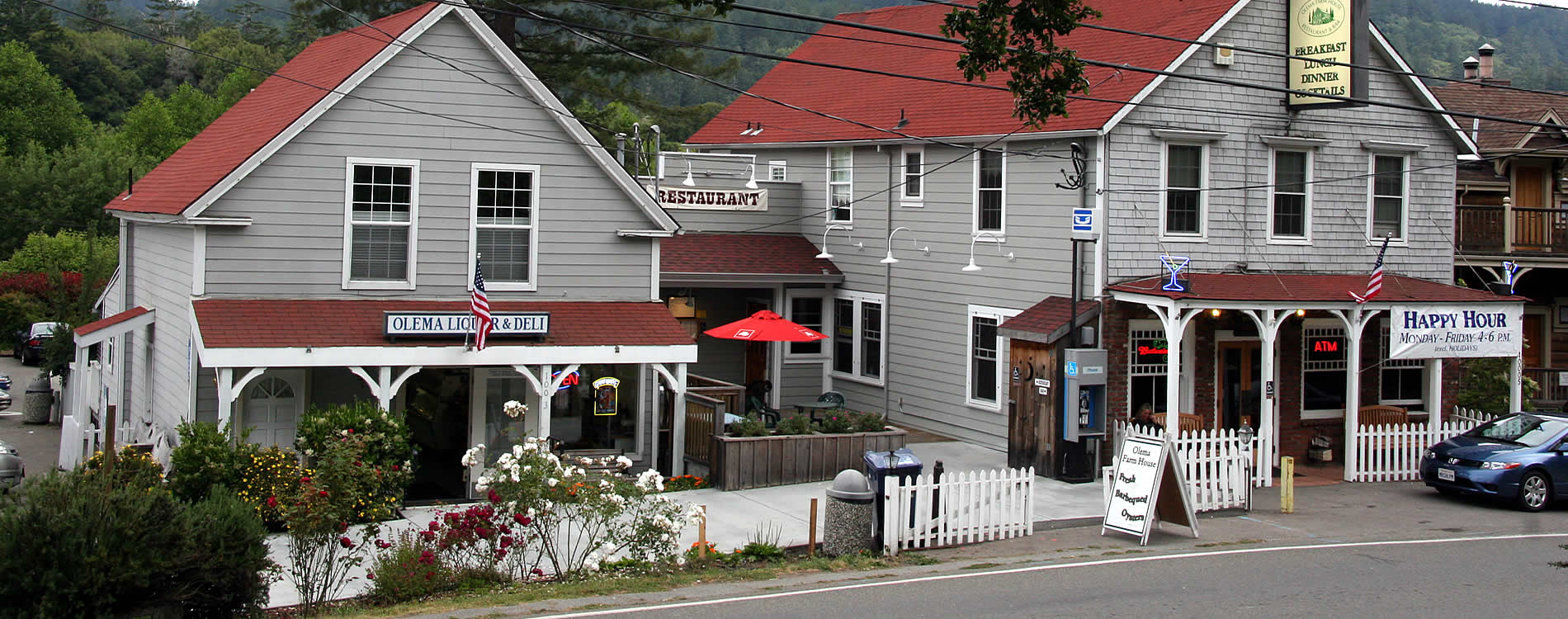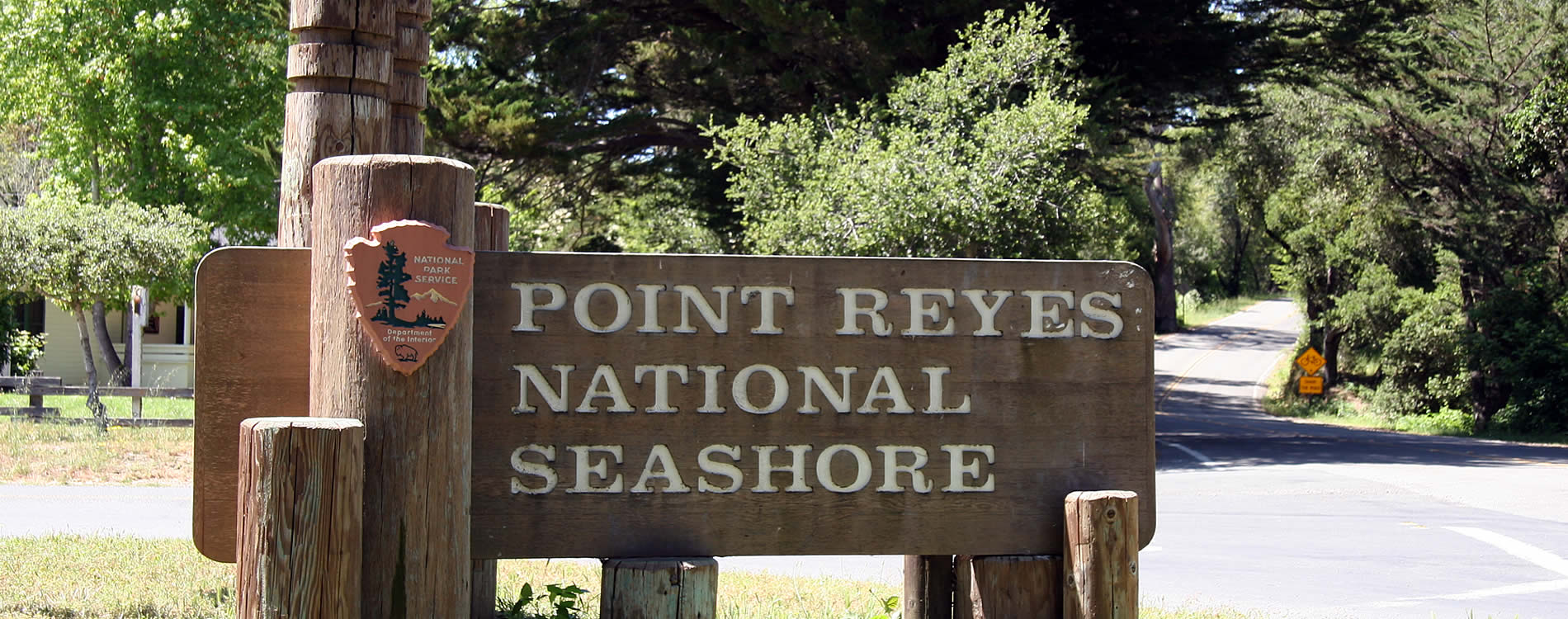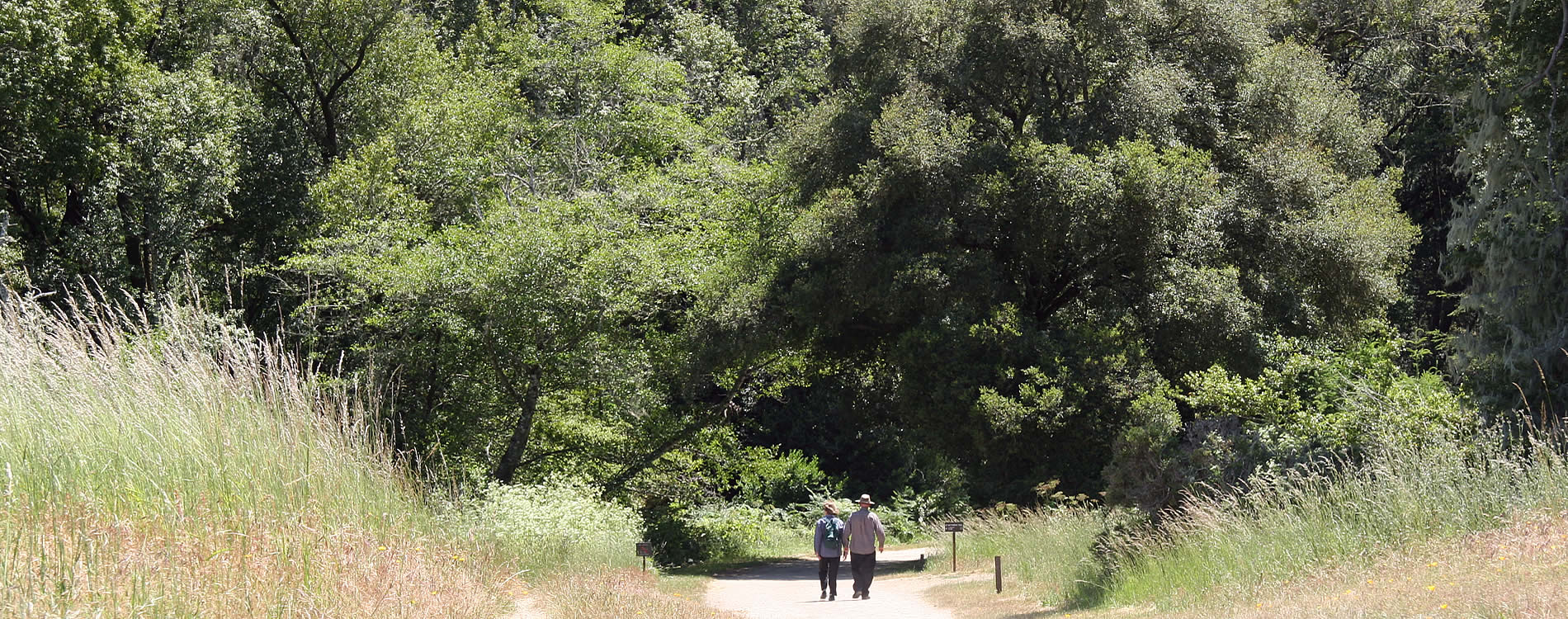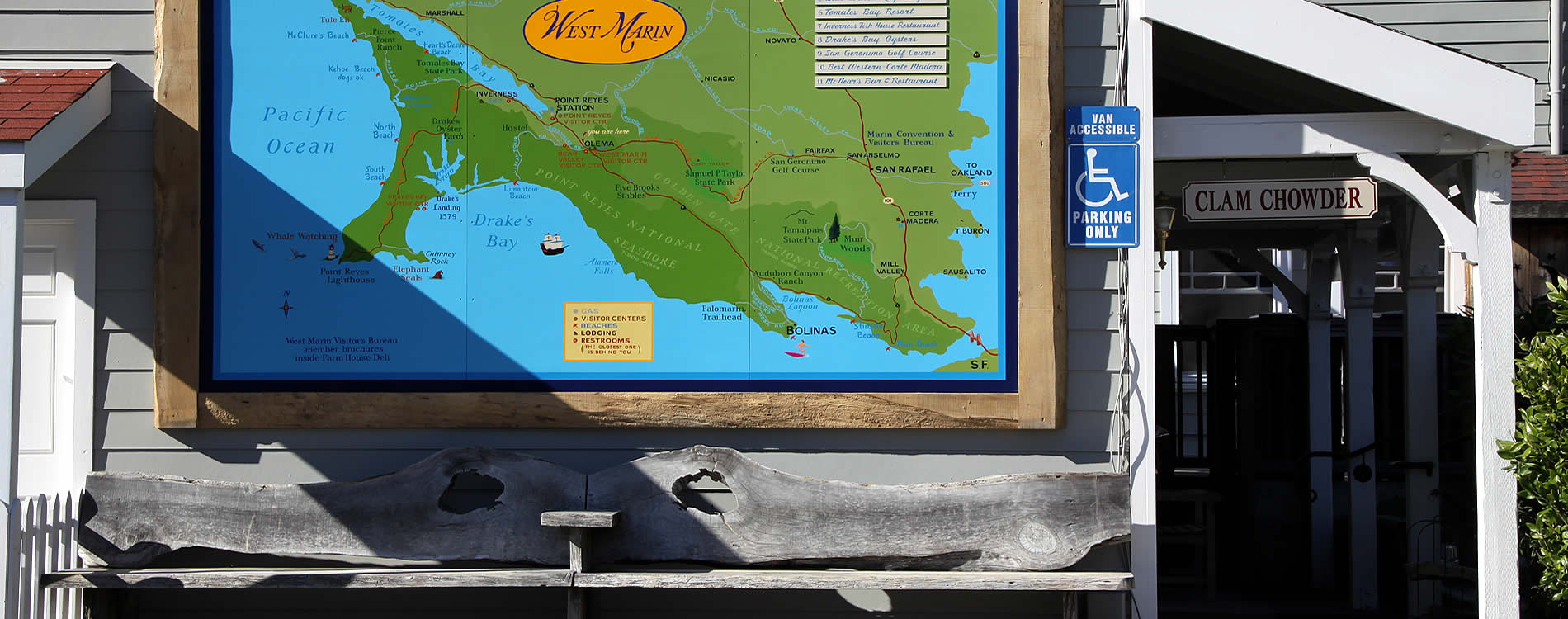Olema, California
Gateway to the Point Reyes National Seashore: Some 110 or so former Miwok Indian settlements have been identified on the Point Reyes peninsula alone, so its perhaps appropriate that the so-called “gateway” town to the National Seashore carries a Miwok name – Olema – which means coyote.
In the late 1800s, when logging was king on the Inverness ridge, Olema was a raunchy row of cardrooms, saloons and establishments of even lesser repute. It would never grow bigger.
In 1874, the narrow gauge North Pacific Coast Railroad was laid to the north, bypassing the old stage road and giving rise to what’s now Point Reyes Station. Olema’s nightlife, however, remained raucous because Galen Burdell, Point Reyes Station’s first developer, allowed only one bar in his new town.
There’s still plenty of history around. At the corner of Sir Francis Drake Boulevard and Highway 1, the Olema Inn and restaurant dates to the area’s original Spanish land grantee, Rafael Garcia, who opened the establishment on July 4, 1876 (his son later gambled it away).
Quick Links
Olema Lodging
Bear Valley Cottage
Inn at Roundstone Farm
Olema Cottages
Sir & Star
These days Olema has a few shops, two restaurants, a lodge, several bed and breakfasts, a large campground, and a large retreat for the Vedanta Society. Also, the Bear Valley Visitor Center, a quarter-mile from town on Bear Valley Road, provides a standard starting point for a visit to the federal park. Inside the center are exhibits and books for sale. Outside are picnic tables, a Morgan horse ranch, and Kule Loklo, a reconstructed Miwok village.
The short Earthquake trail, which is wheelchair accessible, loops out from the visitor center parking lot to a large rupture in the ground left from the 1906 earthquake. Lore has it that during the great quake, a cow in the Olema Valley fell into a crevasse. What is known for sure is that the “San Francisco Earthquake” was centered in Olema. Indeed, Olema Valley and Tomales Bay continuing north sit uneasily atop the San Andreas Fault, where the earth’s North American Plate and Pacific Plate argue with each other and occasionally come to blows.
Rising west from the visitor center is the Bear Valley Trail, with it’s leasurely climb to Divide Meadow and slow drop to Arch Rock at the riotous Pacific Ocean.

